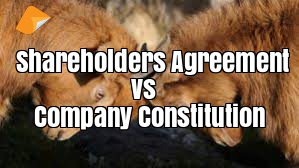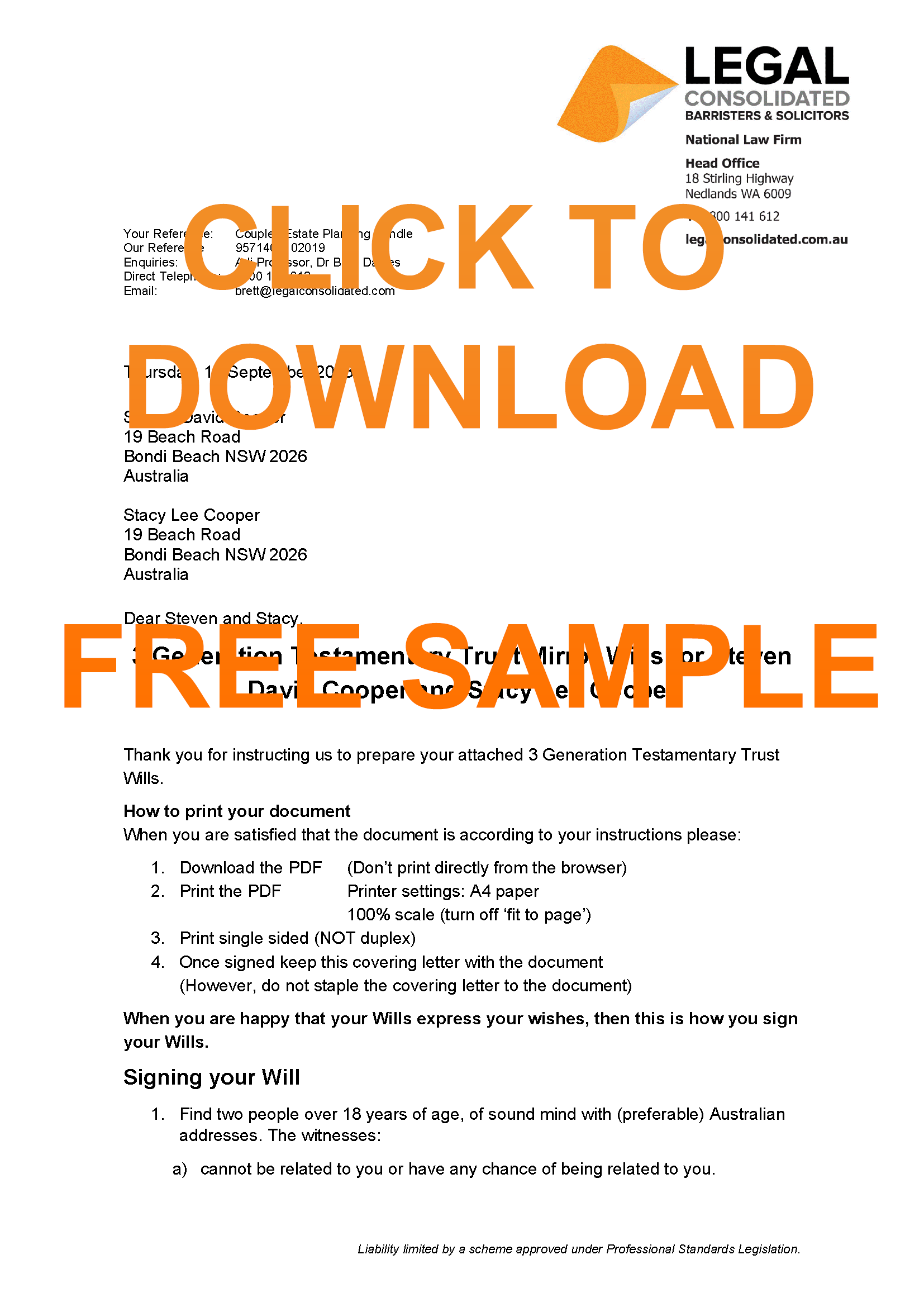What is a Shareholders Agreement?
A Shareholders Agreement is a contract between shareholders. It protects the shareholders’:
- relationships with each other
- other business arrangements
- rights
- responsibilities, obligations and liabilities
- interests
A Shareholders Agreement is a binding contract between shareholders. It sets out their rights, obligations, and procedures. This is in case of shareholder dispute in the future.
Does not the company already have a set of rules?
When you incorporate a company it is governed in three ways:
- Corporations Act 2001 (Cth) – over-arching rules for all companies, including shareholder’s rights and responsibilities
- company constitution – how individual companies are run by the directors and the shareholders, including how the owners control and manage the business such as procedures, calling meetings, and restricting the transfer of shares to ‘outsiders’
- common law – what judges decide at the end of a court case
The company constitution is a ‘contract’ between the company and the shareholders. In contrast, a Shareholders Agreement is a binding contract between the shareholders.
A Shareholders Agreement is a ‘side’ agreement. It is between the Shareholders. The Shareholders come together and ‘privately’ agree to a number of things. See the Free Sample.
A Shareholders Agreement protects everyone?
What if shareholders are in agreement as to how to treat investments or how to run the business? Then a Shareholders Agreement is a must. A Shareholders’ Agreement provides:
- how the company is run
- responsibilities of shareholders
- clarity and certainty
- reduced conflict between shareholders
- protection of shareholder rights if a conflict arises
Does the Shareholders Agreement protect minority shareholders?
Yes. The Shareholders Agreement sets out the rights of one shareholder against another. It protects both majority and minority owners.
The Shareholders Agreement is not prepared so much to help with obeying the company laws. The Constitution and Corporation Act fulfils that requirement. Rather, it protects all shareholders. This includes minority shareholders.
Constitution vs Shareholders Agreement
A Shareholders Agreement is a contract. You are only bound by a contract if you sign the contract. In contrast, a constitution automatically applies to shareholders and directors. New shareholders and directors are automatically bound by the Constitution. They are not bound by the Shareholders Agreement. New shareholders must sign the Shareholders Agreement to be bound.
Our Shareholders Agreement requires the new shareholder to sign the Shareholders Agreement.
Can I amend the Shareholders Agreement?
Q: I need some changes to the Legal Consolidated ‘standard’ Shareholders Agreement.
A: This Shareholders Agreement was first introduced into the marketplace in 1994. Since then we work tirelessly with accountants, advisers and other law firms to continually improve it. We also monitor court cases and the Commonwealth and state changes to the law. It is a widely used document across Australia particularly by other law firms that ‘white badge’ our documents. Many accountants, advisers and law firms will also build our Shareholders Agreement when they build a company on our website.
One of the advantages of a Legal Consolisted Shareholders Agreement is that it can be amended by an exchange of emails. Given that the Shareholders Agreement could last for 100s of years, throughout the life of a successful company, this is important. It is a living document.
One way to look at the Shareholders Agreement is that it is the ‘basic’ rules between the Shareholders. The Shareholders can come together throughout the life of the company to amend the Shareholders Agreement by an exchange of emails. This is a lot simpler than amending the Company Constitution.
The emails are merely kept with the Shareholders Agreement.
Your accountant, financial planner or lawyer can help you draft the emails from time to time.
Shareholder Agreement vs Business Succession Plan
You need separate agreements for each of these situations:
1. A Shareholders Agreement is a contract between the company and the shareholders. It overrides a company Constitution. It details how the company is managed (similar to a Unit Holders Agreement).
2. A Business Succession Plan is an agreement to get rid of the disabled or dead owner, with some money. The outgoing owner gets some money and the remaining owners get his interest in the business. A BSP does nothing to help the business itself. The business may well fold after the person leaves, but at least his wife gets some money and the remaining owners get the business. A BSP is usually funded by life, TPD and trauma insurance.
3. A Key person insurance agreement is insurance paid to the business if a key person is disabled or dies. This does not deal with how to get the shares off the outgoing owner. Key person insurance just helps the business. Key person insurance is usually to repay debt (often secured by the outgoing owners’ home) or cover the cost of training a new person.
4. A Sale Agreement is when you buy or sell something. You may be buying:
-
- shares in a company (Share Sale Agreement)
- something for your company to own
- a business to put into the company (so that the company will own the business)
- a business and wanting the vendor (the seller) to work in your company
This Shareholder Agreement is not a sale agreement. And it is not a Share Sale Agreement. You need a separate agreement called a “Sale Agreement”. A Shareholders Agreement is not a sale agreement.
5. You do not put Employment Agreements into a Shareholders Agreement. If one of the directors is going to work in the business then build an Employment Contract or an Independent Contractors Agreement.
Put a Shareholders Agreement in place early
Put a Shareholders Agreement in place when you first incorporate the company. Later on, circumstances may change. Resentment may build between shareholders.
Agree on rules and procedures for governance in advance. Building a Shareholders Agreement helps avoid future disputes and ambiguities.
It is, however, never too late to build a Shareholders Agreement.
Eight benefits of a Legal Consolidated Shareholders Agreement:
1. Tailored shareholder protection
2. Outlines the basis for important decision-making and restricts the power of directors where necessary
3. Protects the owners, directors and the company against the actions of others
4. Minimises business disputes between owners – makes it clear how decisions are made and provides dispute resolution
5. Assists in getting bank finance – shows stability to potential partners
6. Prevents changes in one shareholder’s personal circumstances from affecting the company or other shareholders
7. Protects the rights of minority shareholders and the investment value of their shareholding
8. Sets out procedures if a shareholder decides to sell their shares
The Shareholders Agreement protects:
1. share splits and types of share
2. voting rights of shareholders
3. actions that require shareholder consent
4. shareholders when they are also company employees
5. pre-emptive rights for the transfer of shares
6. new shares
7. share valuation
8. shareholder liability when the company is in debt
9. share disposal
10. confidentiality
Is a Shareholders Agreement ‘Private’?
If you want a more ‘private’ structure then instead of a company consider a Family Trust or, if there is more than a Mum and Dad, a Unit Trust structure.
Unlike trusts, companies are very public and controlled by the Federal government. However, a shareholders agreement is a private document. It sets out further powers, rights and obligations the shareholders (owners) have to each other and the company. This is beyond those that already exist under the law or through the company constitution.
The Shareholders Agreement is a ‘private’ agreement between the shareholders. It is one of the rare exceptions to the otherwise very ‘public’ and overregulated company structure and highly mandated directors’ duties.
Business Structures to protect Shareholders and Directors
Family trust to protect the Shareholders
- Family Trust Deed – watch the free training course
- Family Trust Updates:
- Everything – Appointor, Trustee & Deed Update
- Deed ONLY – only update the Deed for tax
- Guardian and Appointor – only update the Guardian & Appointor
- Change the Trustee – change human Trustees and Company Trustees
- The company as Trustee of Family Trust – only for assets protection?
- Bucket Company for Family Trust – tax advantages of a corporate beneficiary
Unit trust to protect both the Unit Holders and the Shareholders
- Unit Trust
- Unit Trust Vesting Deed – wind up your Unit Trust
- Change Unit Trust Trustee – replace the trustee of your Unit Trust
- Company as Trustee of Unit Trust – how to build a company designed to be a trustee of a Unit Trust
Structures instead of using a company
- Partnership Agreement – but what about joint liability?
- Incorporate an Australian Company – a second company can hold the ‘safe’ assets
- Upgrade the old Company Constitution – this is why
- Replace lost Company Constitution – about to get an ATO Audit?
- Independent Contractor Agreement – make sure the person is NOT an employee
- Service Trust Agreement – operate a second business to move income and wealth
- Law firm Service Trust Agreement – how a law firm runs the backend of its practice
- Medical Doctor Service Trust Agreement – complies with all State rules, including New South Wales
- Dentist Service Trust Agreement – how dentists move income to their family
- Engineering Service Trust Agreement – commonly engineers set up the wrong structure
- Accountants Service Trust Agreement – complies with ATO’s new view on the Phillips case


